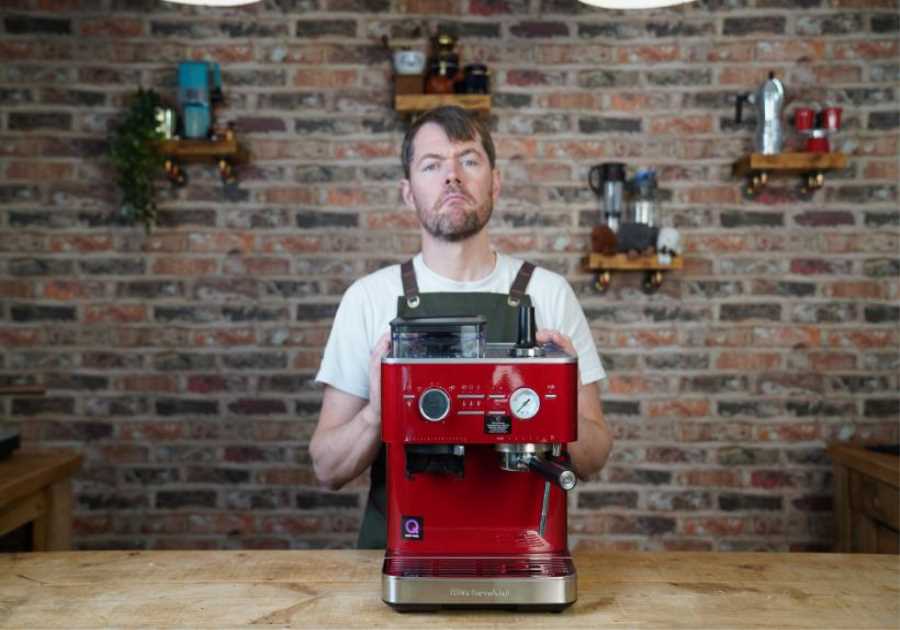This is a guest post by Above Average Coffee, on how to clean your coffee maker (covering most types of coffee makers and coffee machines), how long each coffee maker is likely to last, and tips to prolong the longevity of your manual coffee maker or your coffee machine.
If you’ve ever wondered, ‘how do I clean my coffee maker', ‘which is the most durable coffee machine?’ or ‘how long will my coffee maker last?’ then you've come to the right place, as I'm about to give you a fairly detailed guide on these questions and more, covering as wide a range of coffee makers and machines as possible.
Coffee machines and manual coffee brewers will all vary when it comes to lifespan, partly down to how well you care for them.
I’ve done some research in an attempt to bring to you a complete list of coffee-making devices, how long they should last and what you need to do to maximise their life expectancy. From drip machines to vintage lever espresso machines, I’ve covered all bases and left no stone unturned.
Filter Coffee Machines
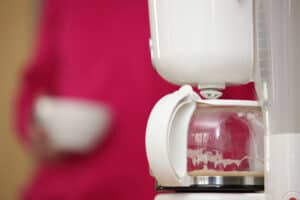
How Long Should It Last?
The classic filter coffee machine, also known as drip coffee machine is a very popular coffee maker. It’s simple and easy to use and makes delicious coffee, as long as you enjoy filter coffee of course. Filter machines can vary a lot in lifespan due to their design and build. A cheap, mainly plastic filter coffee maker with a glass carafe can often last up to 5 years, as long as you don't drop the carafe, whereas premium filter coffee machines such as Moccamaster can last 10 years or even more.
How To Care For It
Your filter coffee machine, as with other coffee machines, will only last you well if it’s properly taken care of.
It’s important to keep the machine clean and avoid spilling coffee on the hotplate, or cleaning it off quickly when this happens. The filter basket, lid, and carafe should be regularly washed using warm soapy water or in the dishwasher (if the manufacturer states it’s safe to do so).
Using bottled water (but check the TDS levels, particularly Calcium & Magnesium) can extend the lifespan of your drip machine as limescale is one of the most common reasons for machine failure.
If you’re using tap water then descale your coffee maker using a vinegar/water solution or a descaling solution, at a descaling schedule depending on water hardness.
It's worth checking your water hardness using testing strips because although descaling is essential, it's also damaging for the internals of the machine, so ideally you want to do a descale only as often as you absolutely must.
Using a water filter can be a good idea although this is more for taste and safety of the user than it is for the coffee machine, as most domestic water filters don't actually filter out much of the minerals which cause limescale, they tend to filter out bacteria and other nasties, which is good for us of course, but it's the minerals (namely Calcium & Magnesium) which harm coffee machines.
You may actually need to descale if you're using bottled water too, depending on the TDS levels, or more specifically depending on the levels of Calcium and Magnesium, so if you're using bottled water, select it carefully – they're all very different when it comes to TDS levels.
What Parts Cause The Most Issues?
The water heater and water pump often cause the most issues with a filter coffee machine. Better quality machines tend to use more durable parts that are less prone to breaking. A build up of limescale in the water pipes will cause pumps to fail to this adds to the importance of de-scaling.
Espresso Machine
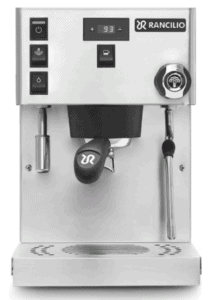
![]()
How Long Should It Last?
Bean to cup espresso machines, generally speaking, should last from anywhere from 5-10 years, possibly even 15 years or longer, if properly cared for. Manual espresso machines, especially the more old school machines, Gaggia Classic, Rancilio Silvia etc., are known to last beyond 10 years, possibly 20 years or longer, depending on how well they're maintained.
How long machines can last for really depends on how complex they are, the availability of parts, and the cost-effectiveness of repair.
Some of the latest, lower-cost espresso machines including the likes of the Sage or Breville Bambino, Bambino Plus, Barista Express, Barista pro and so on, have the ability to last for longer than they will do in all probability, simply because the cost of repairing faults which are likely to happen at some time within 3-5 years of use is likely to be prohibitively expensive.
The more old school espresso machines, including the Gaggia Classic, are no less likely to develop issues within a few years of use, but the availability of parts and people who'll fit them for you, mean that it's usually a financially viable option to repair and maintain a more old school machine, whereas it's often not the case with some of the more modern entry-level espresso machines.
How To Care For It
Every day you should clean the exterior of your machine and brush away loose coffee grounds. Clean the portafilter after each use, and keep the shower screen and the brew path and solenoid valve (if applicable) clean by regularly backflushing your machine.
While most espresso machine brands will recommend occasionally backflushing with detergent (Sage/Breville have their machines set to alert you to backflush with detergent every 200 shots) it's good practice to do water-only backflushing much more regularly, as regular as once per day.
With most espresso machines it's also worthwhile (and very quick and easy) to occasionally remove the shower screen and give it a proper clean.
It's crucial that the steam wand is kept clean, too. Purge plenty of steam through the wand tip after each use, and wipe – and you can also soak the tip in water mixed with portafilter cleaner such as Puly caff.
As with filter coffee machines, it's important to descale your machine as regularly as you need to depending on the hardness of the water you're using. Scale is the major espresso machine destroyer, just speak to any espresso machine engineer and they'll probably agree with you.
It's also important to keep an eye on things like pump pressure and water temperature and to investigate if something doesn't seem right.
Sometimes small issues are symptoms of currently insignificant issues internally which will remain insignificant if dealt with immediately, but which can quickly develop into much more serious problems if left.
A good example of this is a leaking internal water pipe due to an O-ring that has deteriorated and simply needs replacing.
This is an incredibly quick, simple, and cheap problem to fix – however if left unchecked it can lead to much more expensive, even potentially dangerous problems.
Regularly servicing your machine at a schedule depending on how often you're using it, is a good idea. Anywhere between once every three month to once per year could be appropriate just depending on how much use your machine is getting.
If you don't have the ability, the time or the inclination to do this yourself, it's worth hunting around to find someone who will do it for you.
Most towns/cities have numerous independent espresso machine engineers or small businesses, for whom maintaining machines like yours is their bread and butter. This will depend on the machine you have, of course, but there aren't many espresso machines I can think of that literally no engineers will work on.
What Parts Cause The Most Issues?
This depends on the type of espresso machine. With bean to cup espresso machines there can be a number of potential areas of concern, LCD displays, PCBs, brew unit gearing, grinding motors and so on. With manual espresso machines, again it depends on the machine, but the most common parts to fail are the pump, thermoblocks (on cheaper machines which don't have brew boilers), boiler elements & valves.
The most common parts to wear are gaskets/seals and O-rings, and this is just something that would be picked up and easily fixed during routine servicing, but as I mentioned earlier, not replacing seemingly insignificant parts like this when worn, can lead to much more significant issues.
Manual Lever Espresso Maker
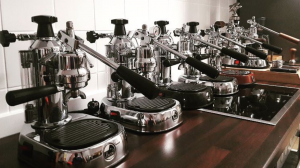
How Long Should It Last?
Manual lever espresso makers are old-school espresso machines and can require a bit more of a learning curve than using a semi-automatic traditional espresso machine. This is simply because instead of a pump automatically applying the pressure, the user does this manually, and there's skill involved.
Once you're through the learning curve, though, lever machines can provide the most pleasurable espresso-making experience, and many believe that lever machines produce among the best espresso. Well made (and maintained) manual espresso machines can also last a lifteime, and therefore can be a great investment.
How To Care For It
This does depend on the machine, some of the more modern lever machines include more modern technology which can mean more moving parts to be concerned with. With old school lever machines, though, including the famous La Pavoni Europiccola, it's mainly a case of checking seals/gaskets, not allowing the boiler to run dry, and keeping on top of descaling.
What Parts Cause The Most Issues?
Again it depends on the machine, newer lever machine designs may have more complex parts – but with the old school machine such as La Pavoni, there's really not much to go wrong. These machines are very simple engineering, some wiring, a couple of fuses, a heating element, a boiler, a group head and the lever itself.
With the La Pavoni it's actually not parts that would be the main concern over the years, but the material the base and drip tray is made of, which can be susceptible to rust over long periods of time (decades). If you're buying a used La Pavoni, it's worth checking the base and drip tray for rust, but even badly rusted vintage machine can be made to look almost new by someone who knows what they're doing.
Pod/Capsule Coffee Machine
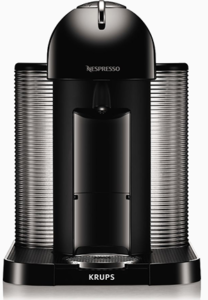
How Long Should It Last?
This really does depend on the type of pod machine, and the make and model. Although many pod machines are incredibly cheap, they're so cheap often because the cost price is subsidised by the manufacturer in order to ensure the maximum number of customers for their pods. The actual build cost of some pod coffee machines can sometimes be quite a bit more than the RRP.
As a rule of thumb, I think it's safe to expect the majority of pod or capsule machines to last around 3-5 years on average, although it's fair to say that there are some pod machines which may only last a year or two, and there are some which are still going strong now after over a decade of use.
How To Care For It
As with most coffee machines, scale build-up is the biggest cause for concern with pod machines, so my main suggestion would be to use bottled water, being careful to select water with low TDS, and remember the main cause of scale build-up is Calcium, followed by Magnesium.
If you don't like the idea of bottled water, and yes of course the use of plastic bottles is an issue – then you can get filtration machines, although the most effective are reverse osmosis machines. These are likely to cost more than your coffee machine, though, usually costing from four to five hundred pounds at the time of writing. There are companies working on cheaper domestic reverse osmosis systems though, so watch this space.
Follow the manufacturer's guidance on cleaning and maintenance, and as with other coffee machines, descale as often as you must, but remember that descaling (well, it's the descaling solution itself that causes this to be exact) does cause wear on your machine, so it's definitely worth finding out how hard or soft your water supply is, and only descaling as often as you need to.
What Parts Cause The Most Issues?
Most capsule machines use thermoblock heaters, and these can fairly easily clog up with scale in hard water areas, which is why it's important to use the best water you're able to, or to regularly descale. The brewing units are also susceptible to clogging up with coffee oils, in the long term. The pump is also a part that can stop working over the years.
Depending on the type of machine, there can be issues in the mechanism which accepts the disk or pod and allows it to come into contact with the water. With Nespresso original machine for example, various issues can develop such as issues that stop the capsule piercing mechanism from properly piercing the pod, or which stops a proper seal being created against the waffle filter.
These kinds of issues can simply be manufacturing flaws, and if they are they'd usually present themselves within the warranty period, fingers crossed.
It's worth pointing out however that when it comes to Nespresso Original, there are so many compatible pods on the market these days that it's theoretically possible to have a badly made pod damage the mechanism. Although, if this does happen within the warranty period, I don't think there's any way the manufacturer would be able to prove that this caused the issue.
To be fair, most pod machines these days, including the new Nespresso Vertuo system, Dolce Gusto & Tassimo, are so cheap – that if an issue does develop outside of the warranty period, most people would not bat an eyelid at replacing their pod machine. This may be good from a convenience perspective, but I don't think it's particularly good for the planet…
Also, although it may seem more cost-effective to buy a £50 pod coffee machine and replace it every couple of years rather than invest hundreds on an espresso machine which may last 10 years, it's worth pointing out that the reason some pod machines are so cheap is that the manufacturer has a monopoly on the capsules, and over the years you may be paying a lot more for your coffee than you need to.
For example, Tassimo T discs contain around 6 to 6.5g of ground coffee. If you're paying around 40 pence per disc, that's the equivalent of something like £60 per Kilo, or £15 per 250g bag. Very high quality speciality single-origin coffee beans will cost you around £7-£10 per 250g bag, or even less if you're buying by the kilo.
Pour-Over Coffee Maker
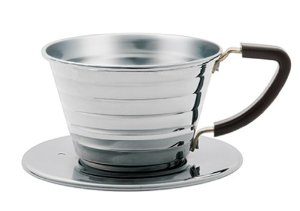
How Long Should It Last?
A pour-over coffee maker like the Chemex, Hario V60 or Kalita Wave can last several years, even decades. With glass coffee makers such as Chemex, and glass versions of the V60, of course it'll last until you accidentally smash it, so take care.
How To Care For It
Keeping the device clean is most important. Wash after every use and rinse well.
What Parts Cause The Most Issues?
There aren't really any parts with manual coffee drippers. In the case of Chemex it's just a glass jug with an insulated collar, which has a neck which is shaped to take a filter. With other drippers including V60 and Kalita, they're one piece devices that simply hold a filter, so it would just depend on what material you choose, for example a plastic or metal device is likely to last longer than a glass one.
Cafetiere
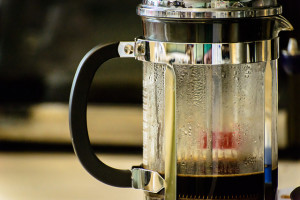
How Long Should It Last?
Again this will depend on the model you go for, and mainly what it's made of. Generally speaking, there are one-piece cafetieres made from earthenware or ceramic or stainless steel – and there are two-piece versions which usually have a metal frame in which sits a glass carafe, with a metal lid and plunger.
The two-part metal and glass cafetieres are usually cheaper, but of course one of these will last until the jug smashes. The one part versions however can last for many years, even decades.
How To Care For It
Regular cleaning of the jug as well as the filter will keep the coffee maker free from coffee oil build up. Taking the mesh filter apart and cleaning in a mild detergent using a soft brush will remove this grime. Rinse off well and handle it gently.
What Parts Cause The Most Issues?
Second to the jug part smashing, which would be a concern with glass cafetieres, the filter part of the plunger is probably the most common issue to develop a problem. These can distort over time and no longer properly separate the grounds from the coffee. If not kept clean the filter can also develop a build up of coffee oils which can give all of your coffees an unpleasant stale taste.
If you buy a more well know brand of cafetiere, however, you'll usually find that you can easily replace these parts if needs be.
Moka Pot / Stove Top / Bialetti
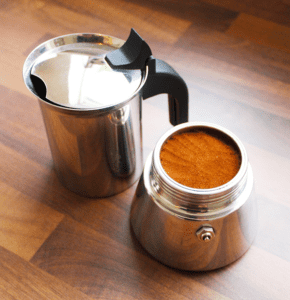
How Long Should It Last?
The Moka pot is a beautifully simple design that should last decades, in theory – especially if you're buying a well-known brand such as Bialetti, for which you can usually get hold of any required parts such as gaskets.
Having said that, most of these coffee makers are mainly made from Aluminium, and there has been rising concern in recent years about the potential of Alumium leaching from such devices, particularly over long periods of use where the inside of the pot ends up degrading. So some people theses days are choosing to replace their moka pot even if it appears there's nothing wrong with it.
Some newer stove top coffee makers are now being made from stainless steel, however it's worth mentioning that there are studies out there which appear to suggest that the potential ingestion of Aluminium via something like this is absolutely tiny.
For example, in this study, it was found that an adult drinking over three litres of coffee per week via a Moka pot (given the small shots of coffee you'd usually produce this way – this is a lot!) would only be getting a maximum of 4% of their tolerable weekly intake of Aluminium.
How To Care For It
Keeping your moka pot clean by wiping the exterior with a damp cloth and cleaning the interior with warm soapy water will keep it sparkling fresh. Make sure you thoroughly rinse away any soap suds as they can remain in the filter basket.
What Parts Cause The Most Issues?
Some Moka pots have a rubber seal which tends to be most likely part to go. Generally speaking, the Moka pot is a very durable and sturdy coffee maker that isn’t prone to issue.
Aeropress
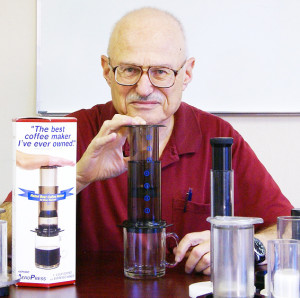
How Long Should It Last?
The Aeropress itself should last many years. They're sturdy things, the branding may come off over the years, they may end up scratched etc., but the only real issue comes when the seal wears, at which point there's no longer a tight seal when plunging. These seals are about a fiver, and very easy to replace, so even though the Aeropress itself is relatively cheap, there's no need to replace it when the seal goes, just replace it.
How To Care For It
Rinse the Aeropress after each use and once a week or so, remove the rubber seal and clean the whole device with mild detergent. You can also put it in a dishwasher, in the top shelf.
What Parts Cause The Most Issues?
The rubber seal is really the only part which wears. Actually, it doesn't “wear” in the usual sense of the word, it actually compresses over time, and with this compression, it ends up no longer forming a proper seal. As I said earlier, though, it's about a fiver to replace, and it's very easily done.
Coffee Percolator
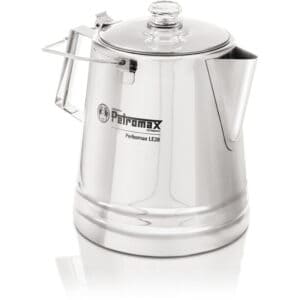
How Long Should It Last?
The simpler the design of the percolator then the longer they tend to last. A stovetop option may last many years, whereas an electric one may only last a year or two.
How To Care For It
Keep the coffee pot clean by washing it using a mild dish soap. Descale it as regularly as required depending on the hardness of the water you're using. Keep the outside clean and shiny by wiping it with a clean cloth.
What Parts Cause The Most Issues?
With electric percolators, the heating element is the most fragile component. A stovetop option removes this issue.
Cold Brew Coffee Maker
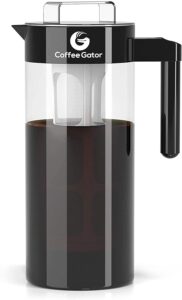
How Long Should It Last?
A well designed cold brew coffee maker can last indefinitely. The simple nature and lack of moving parts make these coffee makers last very well. It does, of course, depend on the quality of the cold brew coffee maker you go for.
How To Care For It
As with most of these coffee makers, cleaning the pot and filter with a mild dish soap and rinsing well is the best course of action. Some cold brew coffee makers are dishwasher safe so check the label to see if yours is.
What Parts Cause The Most Issues?
Cold brew makers with a plunger can experience the same issues as a cafetiere where the mesh becomes loose or bent and compromises the filtering capacity. Coffee makers with a silicone or rubber sealed lid can also become an issue when the seal wears or compresses, meaning that they are no longer airtight. Finally, glass models always run the risk of cracking if dropped or tapped against something accidentally.
Final Thoughts
So that’s it. The most common coffee brewing devices and their life expectancy. The emerging theme that links all these devices is the simpler the design, the less there is to go wrong.
Another major point is, the more you take care of your machine, the better it will last. I’ve listed the average lifespan of these machines but obviously these values vary with design, build quality and the environment you keep them in.
Any well looked after coffee maker can last you a very long time, so don’t neglect them and they’ll treat you well in return.

This is a guest post from aboveaveragecoffee.com.
I don't usually accept guest posts these days, because to be perfectly honest, the posts people usually want me to share with my readers, I often find not to be particulary helpful, or not to be something I've not covered myself at least once or twice…
The guys from Above Average Coffee got in touch asking if they could write a post for coffeeblog readers, with advice on caring for a wide range of coffee makers, and I realized that this is a post I've not done, it's not currently on my radar as I have dozens of other posts already scheduled to write. Oviiously I've given this post a good read before posting, and I think it's a great, helpful post, which is why I've published it.
If you're reading this because you are looking for a coffee-related website to post guest content – please be aware that I turn down 99% of offers. I never charge money for guest posts, the only way I'd ever publish guest content is if, as in this case, the content is such that I think I'd be doing my readers a disservice by not sharing it.
The post How to Prolong the Life of Your Coffee Maker appeared first on Coffee Blog.
By: KevTitle: How to Prolong the Life of Your Coffee Maker
Sourced From: coffeeblog.co.uk/how-clean-coffee-maker/
Published Date: Thu, 04 Nov 2021 16:46:41 +0000
Always check our latest articles at...
https://coffeecutie.com/coffee-brewers






